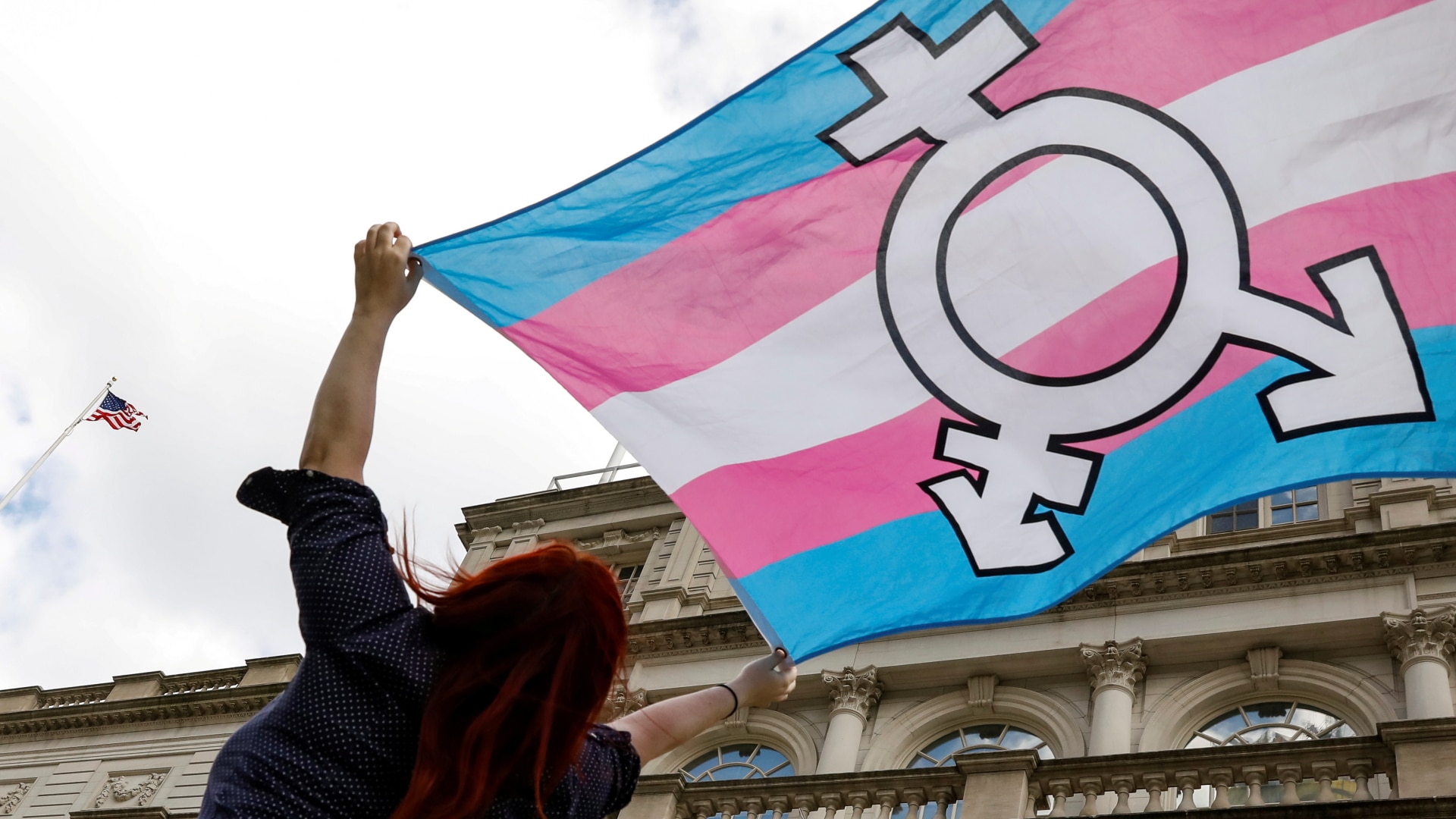

Transsexual relationship: insights and challenges
Transgender relationship: In a world that increasingly promotes diversity and inclusion, relationships with transgender individuals are often the focus of discussions about acceptance and visibility. These partnerships can present unique challenges, from acceptance by friends and family to public reactions. But what does it really mean to be in such a relationship, and do you really need a particularly thick skin to overcome the challenges involved?
Understanding and identity in a transsexual relationship
A transgender relationship can require a deep understanding of the nuances of gender identity. Gender identity refers to a person's internal understanding of their gender, which may match or differ from their sex assigned at birth. Being in a transgender relationship means recognizing and respecting the unique experiences and challenges that a transgender person goes through. This includes recognizing their identity, which is often compounded by personal, social and medical transitions, and supporting their choices in relation to these transitions.
Self-identification also plays a central role in transsexual relationships. Partners must learn to fully accept and support each other's identity, including the possible changes in presentation and address that may accompany the transition process. This often requires an adjustment of one's own perceptions and expectations regarding gender norms and roles. In addition, being in a transgender relationship can heighten awareness and sensitivity to the specific social and emotional needs of the partner. It is important to create an environment in which both partners can feel safe and validated, free from prejudice and discrimination. This often includes educating the social environment - friends, family and colleagues - about these aspects of gender identity in order to avoid misunderstandings and potential conflicts.
Ultimately, the ongoing development of a shared understanding of your partner's needs and feelings is crucial in a transgender relationship. This may mean communicating regularly and ensuring that both partners feel seen and valued in the relationship. The goal is to foster a supportive, loving and respectful partnership based on mutual understanding and acceptance.
Tips for a strong partnership
- Communication is key: open and honest conversations about feelings, fears and expectations are crucial.
- Creating education and awareness: Informing yourself about issues affecting the transgender community in order to provide better support.
- Use support networks: Online and offline groups can provide both emotional support and practical tips.
- Set common boundaries: Decisions about how publicly the relationship is lived should be made together.
- Seek professional help: Therapy can help individuals or couples to cope better with the challenges.
The challenge of acceptance in a transsexual relationship
Acceptance in a transsexual relationship is often a key challenge. Many couples face the problem of friends, family members and wider society not fully recognizing or accepting their relationship. This can manifest itself in a variety of reactions, from subtle prejudice to outright rejection and discrimination. The impact of this lack of acceptance should not be underestimated as it can affect the wellbeing of both partners. In a transsexual relationship, the challenge of acceptance can be further complicated by the invisibility or misunderstandings surrounding transsexual identities. It is not uncommon for transsexual people and their partners to have to justify or explain themselves, which can create additional emotional pressure. It requires considerable emotional resilience to endure this constant scrutiny of one's own legitimacy.
Another aspect of the challenge is to find advocates and allies within their own social circles. This can be done through outreach efforts, where partners inform their friends and family about transgender issues and promote better understanding. Such efforts can help create a supportive environment that strengthens the relationship and helps partners feel more secure. Ultimately, striving for acceptance in a transgender relationship is an ongoing process that requires patience, understanding and often the courage to stand up to injustice and ignorance. Partners must work together to create an environment where their love and identities are respected and valued.
Discrimination and visibility in a transsexual relationship
Discrimination and visibility are significant aspects that can affect daily life in a transsexual relationship. Transsexual people and their partners are often exposed to visible and invisible forms of discrimination, ranging from subtle prejudice to outright hostility. These experiences vary greatly depending on geographical location, cultural context and the personal visibility of transsexuality in the relationship. For many couples in transsexual relationships, simply holding hands or showing affection in public can become an act of courage. They have to constantly weigh up how much of their relationship to make public in order to avoid being the target of discrimination or even violence. These decisions can be emotionally draining and often lead to a constant feeling of vigilance.
In societies where transsexual rights are less recognized or protected, the visibility of a transsexual relationship can even be dangerous. This forces many couples to hide part of their identity in order to ensure their safety. This pressure can have a negative impact on the relationship dynamic and lead to tensions as partners cannot live their relationship freely and openly. In addition, the internet plays a dual role: on the one hand, it offers a platform for support and community, but on the other, it can also provide a space for anonymous hostility. Many couples in transsexual relationships therefore use online communities as safe spaces to find support and share experiences without having to expose themselves to physical danger. Despite these challenges, many couples in transgender relationships are committed to sharing their stories and raising awareness, which can help reduce stigma and discrimination in the long term.
Legal and social hurdles in a transsexual relationship
Legal and social barriers are significant barriers for people in transgender relationships, which can affect not only personal wellbeing but also basic aspects of life such as marriage, healthcare and parenthood. In many countries, transgender people face the problem that their gender identity is not legally recognized, which has direct consequences for their relationships. Without official recognition of their identity, everyday situations, from signing a tenancy agreement to accessing medical services, can become unnecessarily complicated or even impossible. For couples in transgender relationships, this often means that they have to continually fight for their basic rights. This struggle for recognition and equality can be stressful and requires a high level of commitment and perseverance. The lack of legal protections also makes transgender people and their partners vulnerable to discrimination in the workplace, educational institutions and other public settings.
Social hurdles are also present and are often closely linked to legal restrictions. The lack of understanding and acceptance in society can lead to transgender people and their partners becoming isolated. This can increase social isolation and make access to supportive communities more difficult. Many couples in transsexual relationships therefore actively seek out communities and networks that offer support and understanding. The internet and various social media offer platforms to connect, share experiences and support each other. In addition, many organizations are working to improve the legal situation for transgender people, which ultimately also benefits their partners. Despite these efforts, however, the path to full equality and acceptance often remains difficult and lengthy.
Emotional depth and connection in a transsexual relationship
The emotional depth and connection experienced in a transsexual relationship can be particularly intense, as both partners often have to overcome profound personal and social challenges. These shared experiences can lead to a strong emotional bond as a high level of empathy, understanding and mutual support is required. In a transgender relationship, understanding the partner's specific challenges becomes the foundation of emotional cohesion. Partners who actively seek to understand each other's identities and experiences foster an atmosphere of safety and acceptance. This creates a deeper foundation of trust where both people can openly and honestly share their feelings, fears and hopes.
In addition, navigating the social and legal challenges associated with transgender relationships together can bring partners closer together. The shared effort to create a supportive environment and combat discrimination and misunderstanding strengthens the bond and commitment to each other. The emotional intimacy in transsexual relationships is often enhanced by the need to support each other in moments of vulnerability. Acknowledging and celebrating a partner's true identity can be considered one of the most honest and profound forms of love. Such moments of support and recognition are critical to the emotional health and well-being of both partners. By working through challenges together and continually committing to each other's well-being, couples in transgender relationships can develop a unique emotional depth that sets their relationship apart from many others.
Conclusion
Being in a relationship with a transgender person can certainly be challenging, but also immensely rewarding. As society continues to progress towards acceptance and equality, it is important that awareness and understanding within relationships also grows. A "thick skin" may be necessary at times, but it is even more important to cultivate love, respect and understanding for one another. Ultimately, it is these qualities that can strengthen and deepen any relationship, regardless of the identity of the partners.
Are you already over 40? Then you might also be interested in this article. Gay dating over 40
